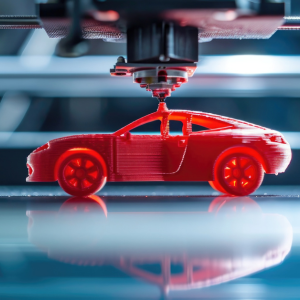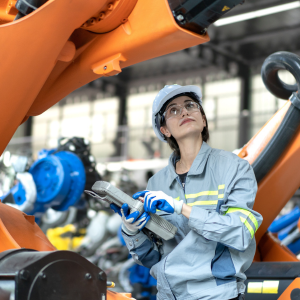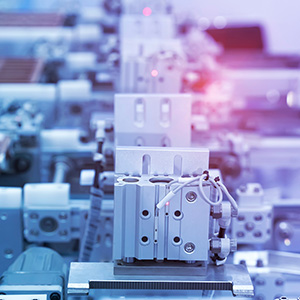How Are Manufacturers Working Towards Net Zero?
Post By: Ryan King On: 17-08-2022 - Industry Trends - Manufacturing

2022 may be the year that climate change finally hits home. With UK temperatures reaching 40°C this summer – and yes, that’s 104° in old money – even climate change deniers might be forced to accept that something has to be done. And with the energy crisis caused by the war in Ukraine, we’re suddenly more aware of how much energy we’re using and what it costs. Of course, this hurts our wallets, but the more important concern is the cost to the planet. The need to reach net zero has become much more urgent.
What Is Net Zero?
Net zero is a shorthand term referring to the desired level of greenhouse gases (GHG) in our atmosphere. Imagine an equation where the amount of GHG produced is on one side and the amount that's removed is on the other. The ideal net result of this equation is zero, so we produce only as much GHG as our planet's atmosphere can handle.
GHGs are those gases which trap heat in our atmosphere and reflect it back onto the earth, turning it into a kind of global greenhouse. The principal culprit in this activity is carbon dioxide, CO2, which has escalated enormously with industrialisation and cannot be handled by natural means like carbon sinks. The concentration of CO2 particles measured in our atmosphere since 1750, when the Industrial Revolution started, has increased by almost 50% and is currently at its highest level for three million years.
Our consumption of fossil fuels has created a huge overload of carbon emissions, especially from internal combustion vehicles and manufacturing. This is leading to noticeable climate change and has prompted governments all over the world to introduce policies and standards designed to tackle the problem. The declared goal in the UK is to achieve net zero by 2050, although some authorities doubt the ability or even willingness of businesses to reach that goal.
What Are We Doing About It?
Governing bodies and standards authorities have been fairly quick to act. The International Organization for Standardization, for example, set up their Energy Management standard ISO 50001 in 2011 (updated in 2018). While this is a voluntary certification, it does give companies guidelines for improving their energy efficiency. Any company with this certification demonstrates that it’s taking climate change seriously.
The British Standards Institution has put together a Net Zero Solution Pack, which contains various standards and specifications. One of these is a net zero barometer, monitoring the progress and attitudes of UK businesses towards the goal. In 2021 the results were less than hopeful, with only 40% of surveyed organisations having made any net zero commitment. 31% were said to be thinking about it, but in 2022, 78% are apparently more convinced that the target is achievable. The most optimistic outlook for attaining net zero is that 71% of businesses have already set themselves targets.
What Targets Should Manufacturers Aim At?
The first thing any manufacturer must do is commit. Although plans may have been derailed somewhat by Brexit and the pandemic, it’s clear that a change can no longer be put off. The government is already pressuring businesses to disclose their energy consumption and carbon emissions, and will soon require them to report on what strategies they are proposing to manage climate-related risks. Business leaders, stakeholders, customers and the whole workforce need to commit to achieving net zero for the 2050 goal to be reached. A new and effective approach to the supply chain must reach all levels and require all participants to be equally committed.
Energy consumption must be reduced at all costs and production made more efficient. This can be addressed in several ways:
- Choosing alternative and repurposed raw materials, and only those that are ethical and sustainable
- Incorporating these new materials into product design to improve its energy efficiency
- Improving operational efficiency during production to reduce cost and waste, using renewable energy sources and implementing smart production technologies
- Reducing the carbon footprint of transport throughout the supply chain, from raw materials to final product delivery, including transport providers
- Moving towards the circular economy model by providing spare parts, repair, recycle and disposal services, and optimising the efficiency of products in the field.
- Rebranding to demonstrate a positive drive towards net zero, to impact both company reputation and community relations
Cost efficiency is always a major business goal, but it needn’t be at the expense of better practice. Gaining – and deserving – green credentials can help to open new markets and build customer trust, as today’s customers are likely to put environmental considerations before product price. Business relations with the local community will also improve if they see you actively recycling and repurposing equipment and components, committing to renewable energy and to reaching net zero as soon as you humanly can.

Net Zero Roadmap
One major step towards this goal has been taken by The Manufacturers’ Organisation, MakeUK, who have published a roadmap for the manufacturing sector to achieve net zero. This offers clear guidance towards the 2050 target and set outs some major milestones along the road. For manufacturers who are undecided or need a push in the right direction, it provides encouragement and insights into decarbonisation of factory production and reducing energy consumption. It takes government legislation and standards into account and highlights what commercial opportunities can be grasped by committing to net zero.
These include not only the direct benefits of cutting energy consumption and carbon emissions, but can also open doors to financing for green investments. Manufacturers can acquire new knowledge in developing and exporting new products, making the sector a more sustainable, innovative and attractive prospect for employment. Following the road to net zero will lead to a change in job skills and technologies and create a new countrywide niche for green and digital jobs.
What You Must Do
- Build sustainability into your business strategy as a central purpose, around which you can develop the specific tactics listed above
- Set clear decarbonisation targets and ensure the company’s entire workforce understands and follows them
- Demonstrate the benefits of sustainability to key players in the company who may have to initiate and enforce new policies and procedures
- Encourage all your employees to contribute ideas for helping the business to achieve – even exceed – your net zero target
One problem with this transition is the change in skillsets, from industry knowledge and experience to digital and transferable capabilities. To create a net zero committed workforce, you’ll have to start by redefining it, as well as the workplace and the work itself. In a sustainable environment, everything will be evolving at a faster rate, from materials and technologies to the way your factory floor is set up and operated. This means that your workforce will have to be agile and able to learn quickly, and be willing to work with IIoT applications and tools. Since the pandemic changed our approach to the workplace, more people will prefer or even demand to work at home.
It may require a complete reshuffle of your workforce to address the new challenges and focus on new modes of learning and interfacing with an increasingly digital world. While manufacturing will always need electricians and engineers, there will need to be more emphasis on software skills, controlling remote access equipment and applications where computers will play a greater role. In a future manufacturing environment, these skillsets will become more important than industry knowledge, and soft skills like adaptability and problem-solving will take precedence over mechanical expertise.
Organisations will also need to be thoroughly versed in cybersecurity and social intelligence, as well as learning how to work more collaboratively. To help negotiate rapid change and successfully reduce the environmental impact of climate change, businesses must also learn to collaborate with energy providers, suppliers, customers and the community. Everyone is becoming aware that the manufacturing lifecycle needs to be greener and manufacturing decarbonised.
Success For Siemens
One manufacturer who’s successfully negotiating their journey to net zero is Siemens. The company as a whole is leading the world with their decision to achieve net zero by 2030. At their Congleton plant in the UK, they’re way ahead of schedule, managing to become carbon neutral this year – a whole eight years before anyone else.
Many of the strategies outlined above were deployed to reach this milestone, including using carbon neutral, certified biogas for the gas engine and generating a significant amount of renewable hydroelectric energy. In addition, Siemens Congleton installed an intelligent building management system to improve energy efficiency, modernised their windows and changed to LED lighting. They've made EV charging available to staff and site visitors and entirely cut out any waste going to landfill.
The range of sustainable solutions adopted by the Congleton plant for energy generation and reduction was guided by a strategic roadmap. This included detailed timelines and ways to safeguard business continuity, such as digital services and finance. The company’s achievement has been recognised by net zero experts The Carbon Trust, who in June awarded Siemens their tier-one certification for ‘Taking Action’ under their Route to Net Zero Standard.
Get More From Rowse Straight To Your Inbox




